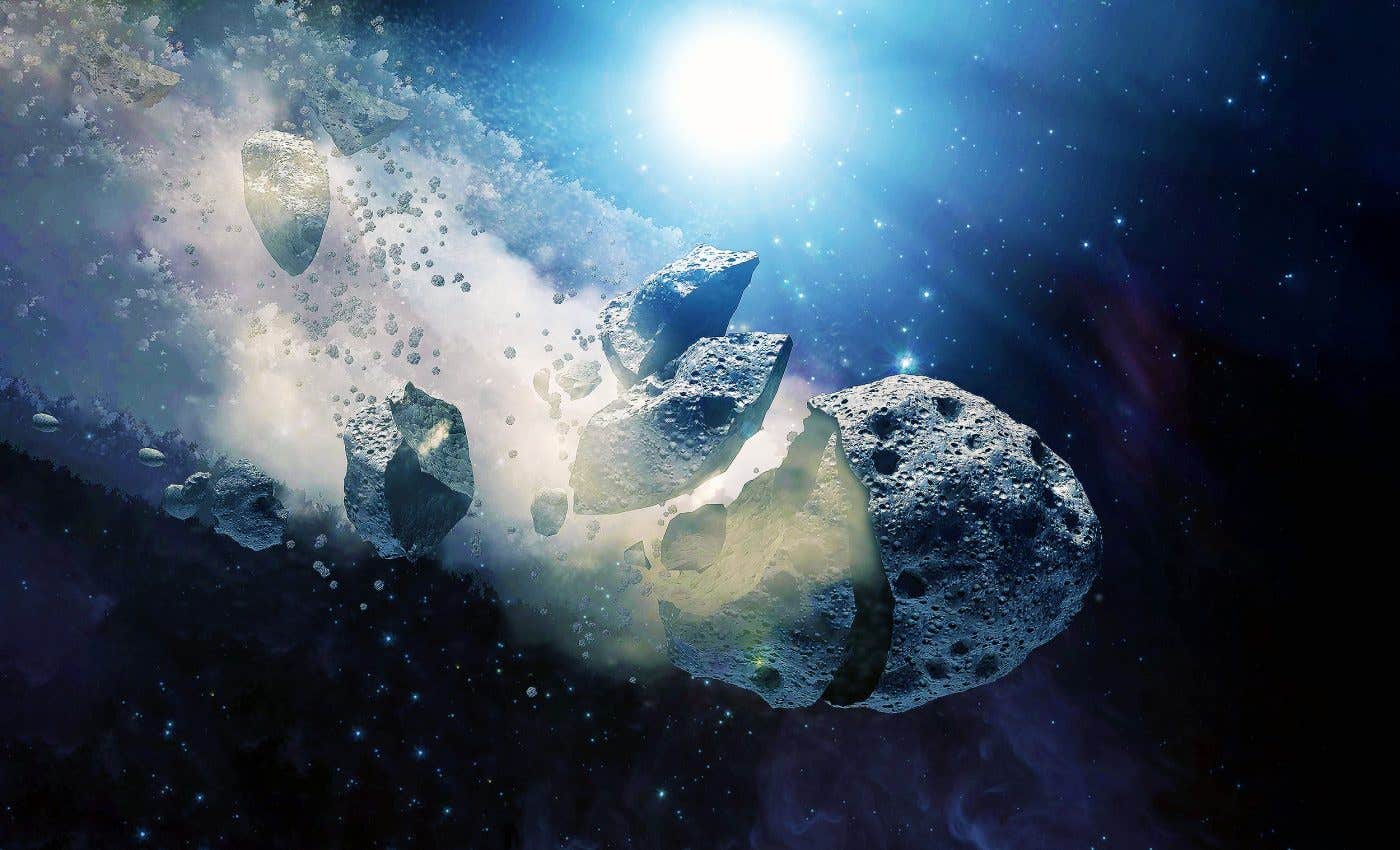Space ice is less like water than scientists thought, study finds
New research shows space ice isn’t fully disordered but contains nanocrystals, changing what we know about water in the cosmos.

Space ice, once thought to be fully amorphous, holds hidden nanocrystals that reshape our understanding of water and its role in the Universe. (CREDIT: CC BY-SA 4.0)
Water frozen in the depths of space has long been considered a shapeless, frozen fog. For decades, scientists believed it formed without structure, too cold and still to grow orderly crystals. But a new study by researchers from University College London and the University of Cambridge is challenging that belief.
By combining detailed computer simulations with carefully controlled lab experiments, the team found that space ice is not entirely amorphous. Instead, it holds tiny crystals hidden within its disordered structure—small patterns that could shift what we know about ice, water, and even life in the Universe.
A closer look at cosmic ice
In space, water doesn't behave the way it does on Earth. Here, ice usually forms a neat, crystalline pattern. You can see it in the symmetry of a snowflake. But in the cold vacuum between the stars, where temperatures drop far below freezing, scientists thought ice formed without order.
This form of water, known as low-density amorphous ice, was believed to freeze straight from vapor onto cold surfaces, like dust grains in comets or icy moons, without taking on any structured shape.
That view is changing.
By freezing virtual boxes of water molecules down to -120 degrees Celsius, researchers could simulate how ice forms at different rates. Some simulations created nearly perfect disordered ice, while others allowed tiny crystals—about three nanometers wide, slightly larger than a DNA strand—to form within the chaos. The result that matched previous X-ray diffraction data best was not fully disordered, but about 20% crystalline and 80% amorphous.
“We now have a good idea of what the most common form of ice in the Universe looks like at an atomic level,” said Dr. Michael B. Davies, lead author of the study. “This is important as ice is involved in many cosmological processes, for instance in how planets form, how galaxies evolve, and how matter moves around the Universe.”
Related Stories
Memory locked in ice
The study didn’t stop with simulations. Researchers created real samples of amorphous ice in several ways. One method mimicked how ice forms in space: by depositing water vapor directly onto a surface chilled far below freezing. Another involved crushing normal ice at very low temperatures to form high-density amorphous ice. After forming both types, the team gently warmed the samples, letting the ice develop crystals.
They noticed that each sample produced a different crystal pattern once it warmed. This was key. If the ice had truly been fully amorphous—completely without order—it shouldn’t have remembered anything about its earlier form. But since it did, the scientists concluded that even space ice has some structure hiding inside.
“Ice can ‘remember’ its previous structure,” said Professor Christoph Salzmann, co-author of the study. “The order of hydrogen atoms in a crystalline state can be preserved even as conditions change.”
This suggests that space ice isn’t as simple as once thought. It holds history in its frozen form, carrying clues about its origin and the environment in which it formed.
What it means for life beyond Earth
One theory about how life began on Earth is that its essential ingredients—like amino acids—came here from space on comets. This idea, known as panspermia, relies on space ice being able to trap and protect complex molecules during long journeys. But the new findings complicate that idea.
Davies explained: “Our findings suggest this ice would be a less good transport material for these origin-of-life molecules. That is because a partly crystalline structure has less space in which these ingredients could become embedded.”
Still, the theory isn’t ruled out. “The theory could still hold true,” Davies added, “as there are amorphous regions in the ice where life’s building blocks could be trapped and stored.”
So while the results might weaken the panspermia argument slightly, they also give a more realistic picture of the conditions life’s precursors might face while traveling through space.
More than just ice
The implications of this research stretch beyond the origin of life. Amorphous materials are common in technology. For example, fiber optic cables, which move data across the world, rely on glass that must stay disordered. If these materials contain tiny crystals that affect performance, learning how to remove them could lead to better technology.
“Our results also raise questions about amorphous materials in general,” Salzmann said. “These materials have important uses in much advanced technology. If they do contain tiny crystals and we can remove them, this will improve their performance.”
The findings could also help space agencies design better spacecraft. Ice in space isn’t just a passive material. It could serve as radiation shielding or as a source of fuel if broken into hydrogen and oxygen. Knowing more about its forms and structure could lead to smarter uses.
A strange and essential substance
Water is vital to life, but it behaves in strange ways. It doesn't act like most liquids, and under pressure or low temperatures, it takes on more than 20 different solid forms. Some float, some sink, and others change depending on how they’re formed.
The latest study builds on previous work. Low-density amorphous ice was first discovered in the 1930s, when water vapor was frozen on a metal surface cooled to -110 degrees Celsius. High-density amorphous ice came later, in the 1980s, when researchers compressed ordinary ice at about -200 degrees Celsius. In 2023, the same UCL-Cambridge team discovered medium-density amorphous ice. That form shares the same density as liquid water, so it would neither float nor sink if dropped in a glass.
These many forms highlight how little we still know about a substance so common on Earth. “Water is the foundation of life but we still do not fully understand it,” said co-author Professor Angelos Michaelides. “Amorphous ices may hold the key to explaining some of water’s many anomalies.”
So even though this research focuses on space, it might also help scientists solve mysteries here on Earth. How water behaves, how it forms, and how it remembers—these are questions that touch everything from climate science to new materials to the study of life itself.
As Davies put it, “Ice is potentially a high-performance material in space. It could shield spacecraft from radiation or provide fuel in the form of hydrogen and oxygen. So we need to know about its various forms and properties.”
And now, thanks to the collaboration between computer models and experimental science, we do.
Note: The article above provided above by The Brighter Side of News.
Like these kind of feel good stories? Get The Brighter Side of News' newsletter.



